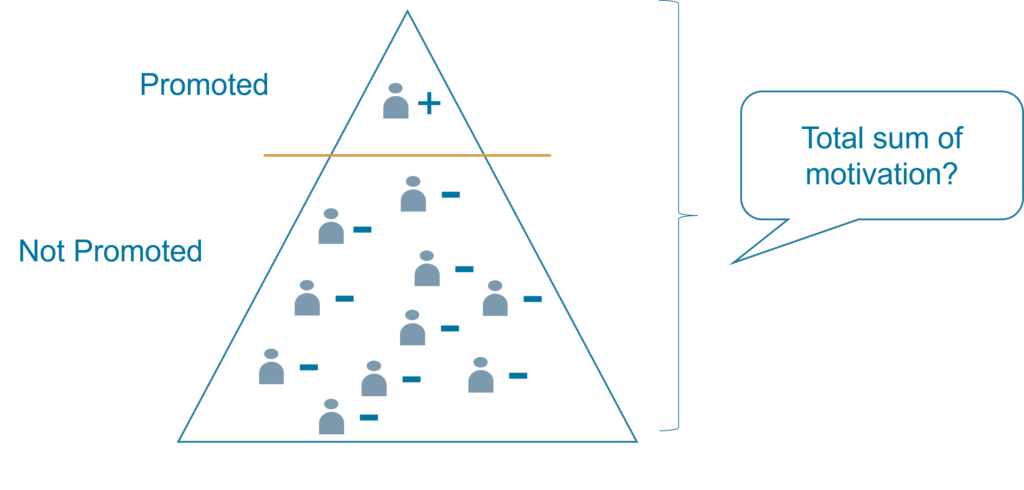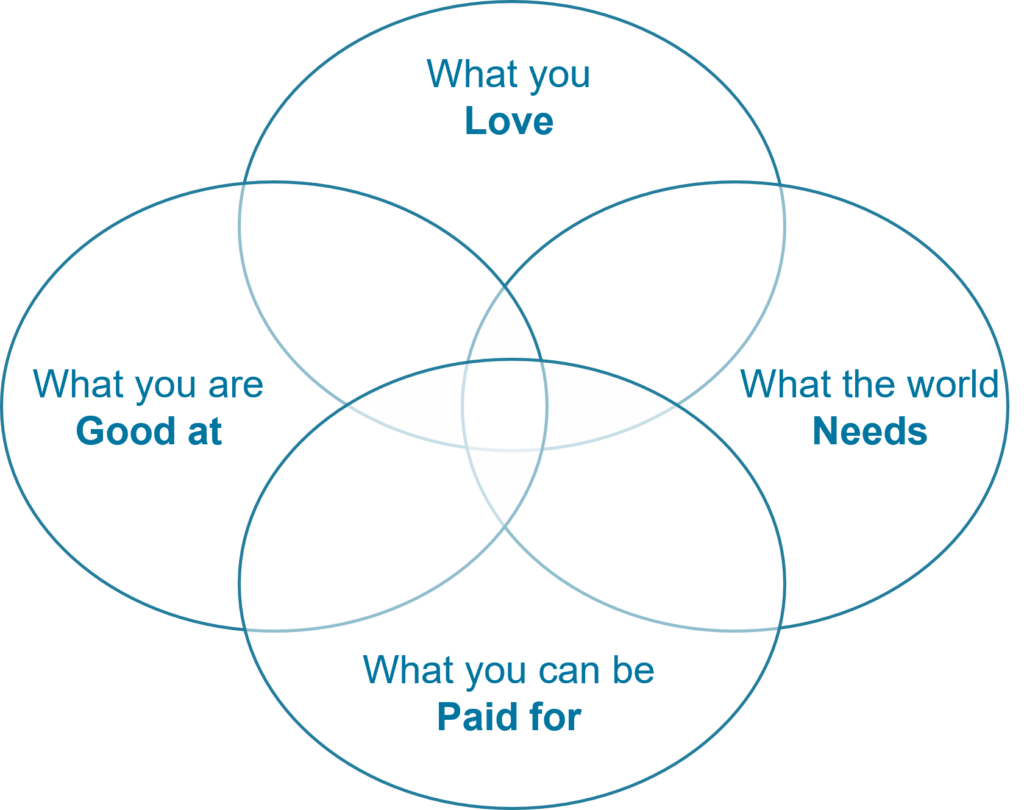2. Motivation

Why it matters
There is a clear link between energy and motivation. Motivation is the foundation of movement, the key to perseverance. When you are highly motivated and in movement, you are in Flow.
Flow builds energy, and voilà – you are in a positive spiral!
How it works
The key to building motivation is to recognize the importance of internal motivation and to value it higher than the external. Organizations are usually good at creating reward systems to drive extrinsic motivation but at the same time, undervaluing the power of internal motivation.
There is a hidden side effect to relying on external motivation, it can actually demotivate people.

Let’s look at some data on factors which are important to internal motivation. When asked, “What motivates you?” respondents in Gallup’s Employee Engagement study replied:
- I know what is expected of me at work
- I have the material and equipment I need to do my work right
- At work, I have the opportunity to do what I do best every day
- In the last seven days, I have received recognition or praise for doing good work
- My supervisor, or someone at work, seems to care about me as a person
- There is someone who encourages my development
- At work, my opinion seems to count
- The mission or purpose of my company makes me feel that my job is important
- My fellow employees are committed to doing quality work
- I have a best friend at work
- In the last six months, someone at work has talked to me about my progress
- This last year, I have had opportunities at work to learn and grow
Ask yourself this: For what proportion of your work week are you in a state of focused flow where you have the material and information you need to do your work properly? While focus is key to both success and motivation, it remains one of the most scarce resources in today’s work environment.
Let’s look at a second data point. In the book “Drive, the surprising truth about what motivates us”, Dan Pink compiled the results of several studies of what generates drive. He extracted three factors:
- Autonomy: our ability to be self-directed
- Mastery: the drive to get better at stuff
- Purpose: not just doing work, but doing work that makes a difference
Is money a motivator? It is, until we get to a point where we don’t need to think about money every day anymore. From this point, across a larger crowd[MS1] , Autonomy, Mastery and Purpose play a larger role.
Five factors that fuel motivation
Let’s move from theory to practice. What can I and what should I focus on as a leader if I care about building a motivating environment?
1. Variability in your work
When the work that you do has variability, it becomes more motivating. When the freedom to learn new things is given, every day work does not become routine.
(see Gallup’s study #6, #11, #12 and “Mastery” above)
2. Freedom of choice
Having some control on what you spend your time on is highly motivating.
(see Gallup’s study #3, #7 and “Autonomy” above)
3. Purpose
If I look at the bigger picture of what I do, it fits in with what I want to accomplish in life. Being part of something bigger gives me the extra stamina to pull through.
(see Gallup’s study #8 and “Purpose” above)
4. Job completion
You can see the tangible results of your work. This is one reason why spending time nurturing your home is rewarding – when mowing the lawn, building a patio, or painting a room, you get instant gratification of a job well done through the simple fact that progress is visible.
(see Gallup’s study #1, #4, #9, #11 and “Mastery” above)
5. Fast feedback
Getting feedback on what we have created is the final piece. Nothing beats seeing with your own eyes a customer’s excitement from an awesome product experience. Or learning early that you have not found the right fit.
At The LEGO Group we learn if our products appeal to our audience by trying them out on kids. I remember one instance where a team had just dropped a product they had been working on with a group of kids and after a short while, one of the kids turned to his mum and asked. “Ok mom, can we go and play now?” You know at this point that you did not produce a home run.
– Eik
The observant reader will recognize that almost all of the above factors are present in Agile. Good Agile systems are pull based, you have the freedom of choice within boundaries as to what bets to pull, that also stimulates challenge – I can grow my skills into new areas in my daily work. Good Agile teams are self-organizing, they have autonomy in how to solve a problem and they complete work regularly, generating fast feedback.
What should I, as a leader, pay specific attention to?
The single most important factor that you as a leader should devote specific attention to is Purpose. Dare to ask challenging questions: “What difference do we, as a company, want to make in the world?” “As a co-worker, what makes me tick?” Work hard to align the two. Lifting the lid on these questions can be scary, and you are bound to be find a few surprises from the answers that come out. That said, the reward on the other side can be so much greater. Nothing stops a motivated team.
Questions that help facilitate a conversation on Purpose
Good questions for finding a purpose fit, illustrated using an ikigai Diagram.
ikigai is a japanese concept that means “A reason for being”

References
Gallup’s Employee Engagement Survey: Ask the Right Questions With the Q12 Survey. (2.7 Million Workers Across 100,000+ Teams)
Drive: The Surprising Truth About What Motivates Us, Pink Dan, Riverhead Books, 2011